Birds with Orange Beaks bring a burst of color and intrigue to the avian realm, showcasing a vivid palette that captivates observers worldwide.
This diverse group encompasses species from various habitats, each sporting an unmistakable orange beak that serves both functional and ornamental purposes.
From Central America’s social Orange-billed Sparrow to the iconic Toco Toucan of South American rainforests, these birds exhibit a stunning array of hues, emphasizing the significance of their beaks in survival strategies.
As we delve into the profiles of 16 such birds, we uncover the ecological roles played by these distinctively colored bills, exploring the connections between form, function, and the unique environments these avian wonders call home.
Join us on this vibrant journey through the diverse landscapes inhabited by Birds with Orange Beaks, where nature’s artistry takes flight. Stay focused.
16 Birds with Orange Beaks
Explore the vivid world of birds with orange beaks, each embodying unique traits and contributing to the rich tapestry of our ecosystems.
From the melodious Common Blackbird to the elegant Mute Swan, discover these avian wonders’ diverse lifestyles and habitats in the following profiles.
1. Common Blackbird
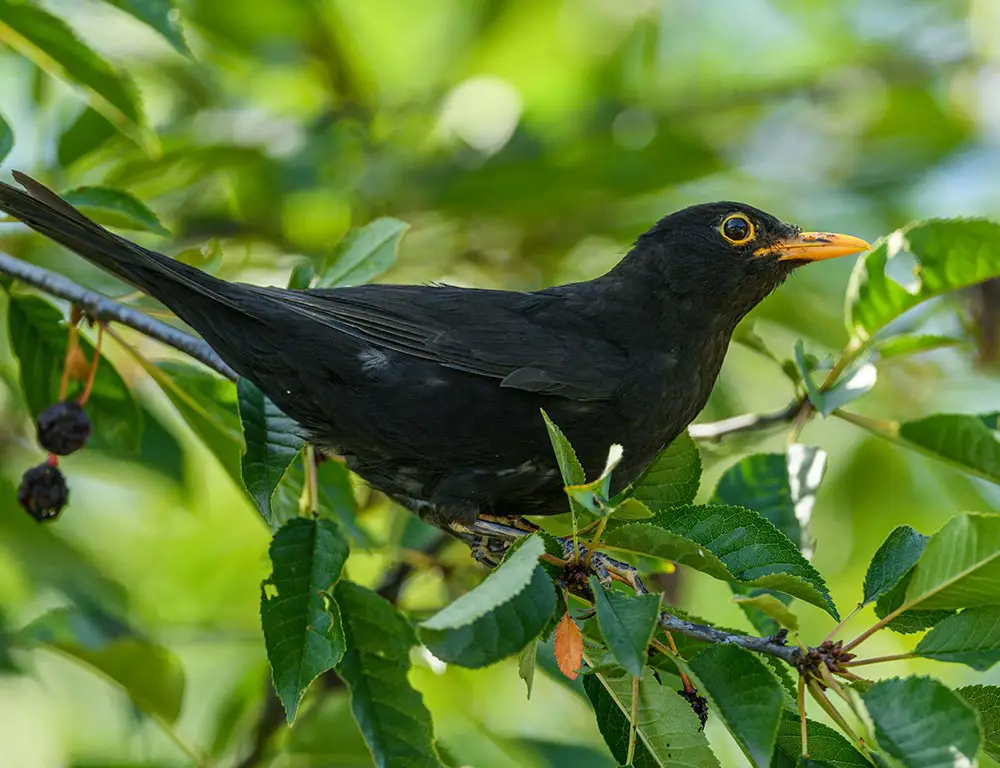
- Scientific name: Turdus merula
- Size: 9.8 to 10.6 inches
- Weight: 2.5 to 4.5 ounces
- Population: Abundant and widespread
- Life span: 2 to 5 years
- Wingspan: 12.6 to 16.1 inches
- Status: Least Concern (IUCN)
The Common Blackbird is a medium-sized songbird with a striking orange-yellow beak. Found across Europe and Asia, these birds are known for their melodious songs.
They thrive in a variety of habitats, from woodlands to urban areas. They are omnivores, feeding on insects, fruits, and berries.
Their bold and adaptable nature enables them to coexist with humans, often nesting in gardens and parks.
2. Grey-headed Gull
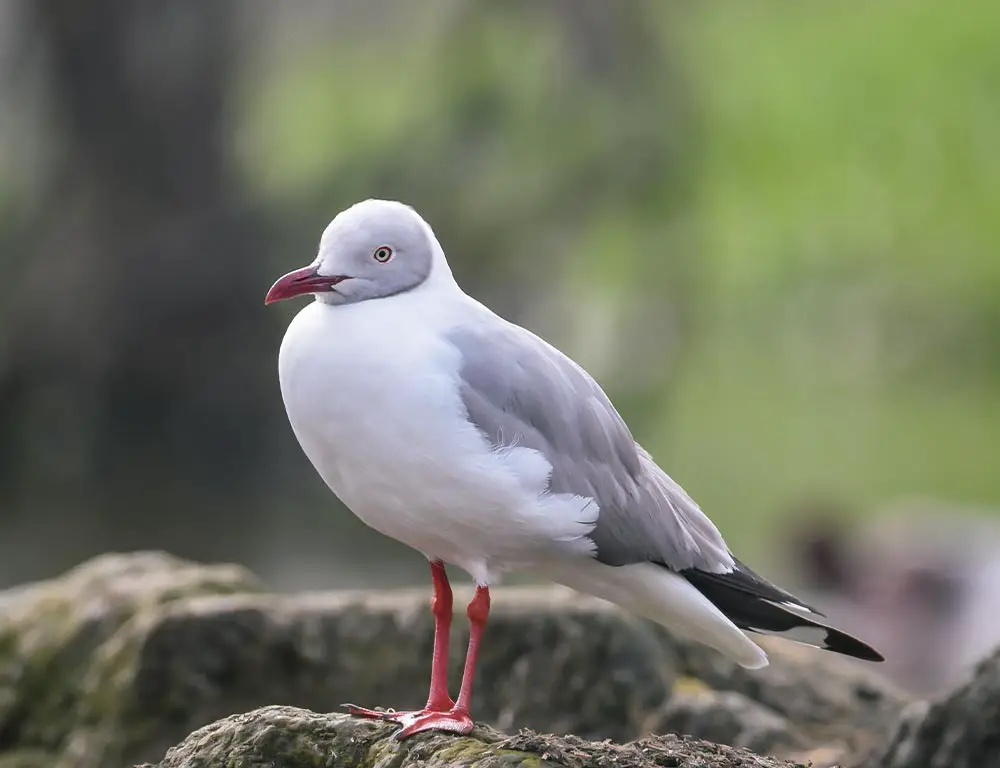
- Scientific name: Chroicocephalus cirrocephalus
- Size: 16 to 18 inches
- Weight: 7.5 to 13.4 ounces
- Population: Stable
- Life span: 10 to 15 years
- Wingspan: 37 to 41 inches
- Status: Least Concern (IUCN)
The Grey-headed Gull displays a distinctive orange-red bill, contrasting with its grey head and white body.
These gulls are commonly found along coastal areas and inland waters. They are opportunistic feeders, consuming fish and insects and scavenging for food in human environments.
Breeding in colonies, they exhibit strong social behaviors and are known for their graceful flight.
3. American White Pelican
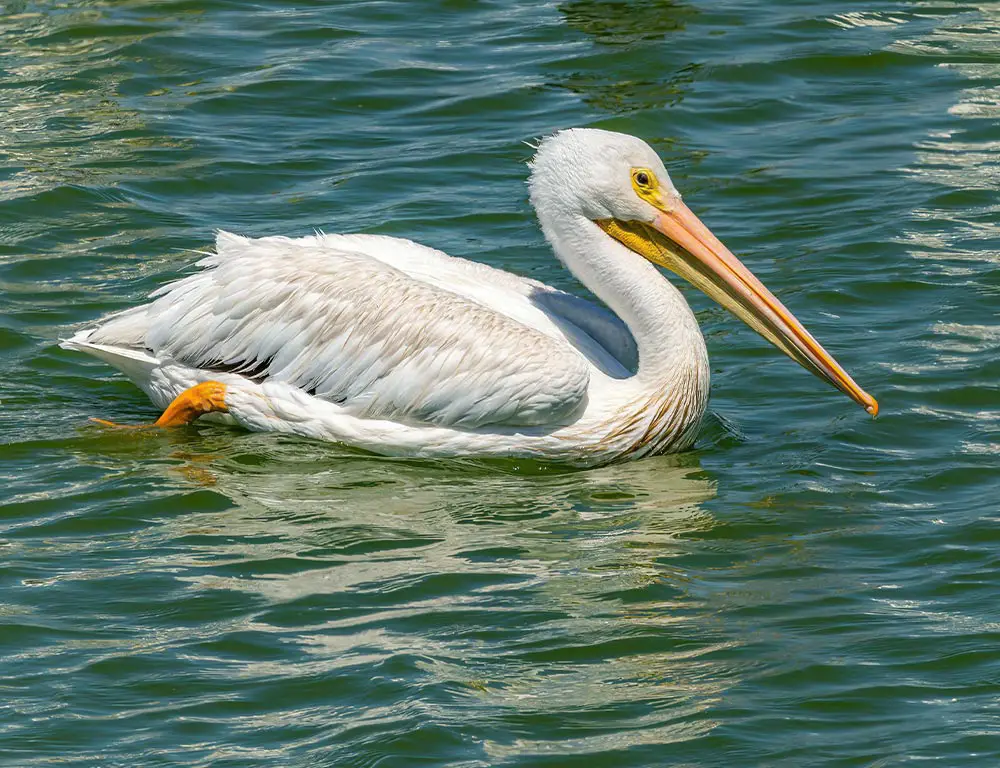
- Scientific name: Pelecanus erythrorrhynchos
- Size: 50 to 67 inches
- Weight: 11 to 20 pounds
- Population: Increasing
- Life span: 16 to 20 years
- Wingspan: 9 to 10 feet
- Status: Least Concern (IUCN)
The American White Pelican boasts an impressive orange bill with a distinctive pouch. These large birds are often seen in freshwater habitats, primarily in North America.
Their feeding strategy involves cooperative foraging, where a group of pelicans work together to corral and catch fish.
They are migratory birds, traveling long distances between breeding and wintering grounds.
4. Northern Cardinal
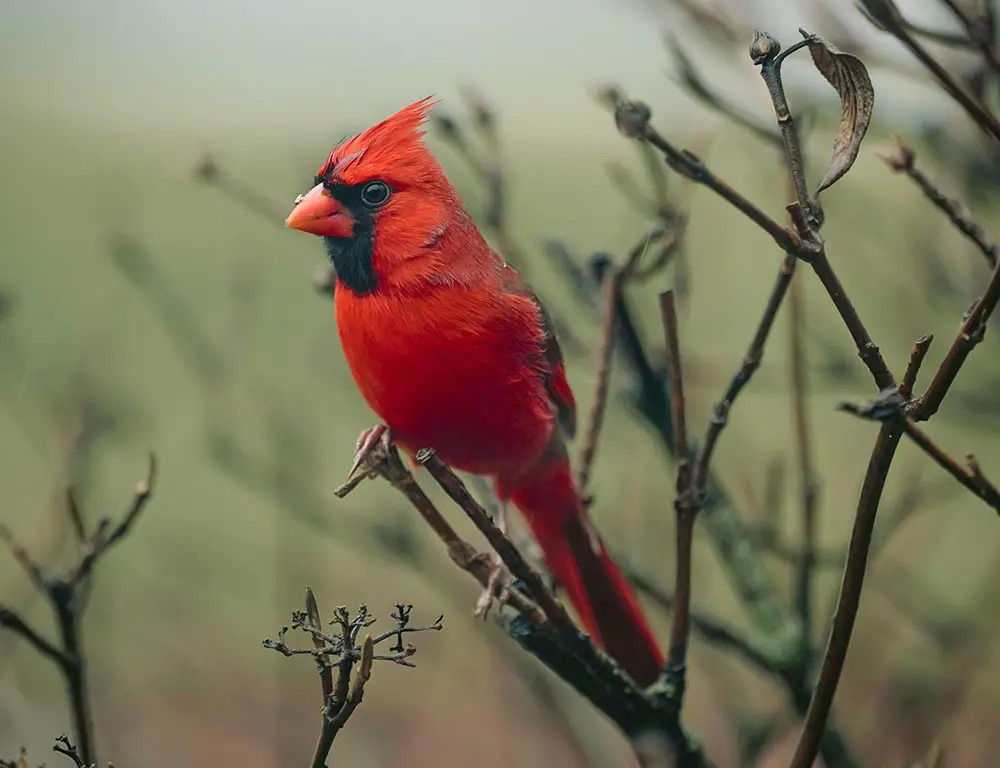
- Scientific name: Cardinalis cardinalis
- Size: 8.3 to 9.1 inches
- Weight: 1.5 to 1.7 ounces
- Population: Stable
- Life span: 3 years (average)
- Wingspan: 9.8 to 12.2 inches
- Status: Least Concern (IUCN)
The Northern Cardinal is known for its brilliant red plumage and a striking orange-red bill. Native to North America, these birds are often found in woodlands, gardens, and shrubby areas.
Cardinals are seed eaters, but they also consume insects. Males are particularly territorial and are known for their melodious songs.
They are adaptable to urban environments, making them a common sight in backyard feeders.
5. Atlantic Puffin
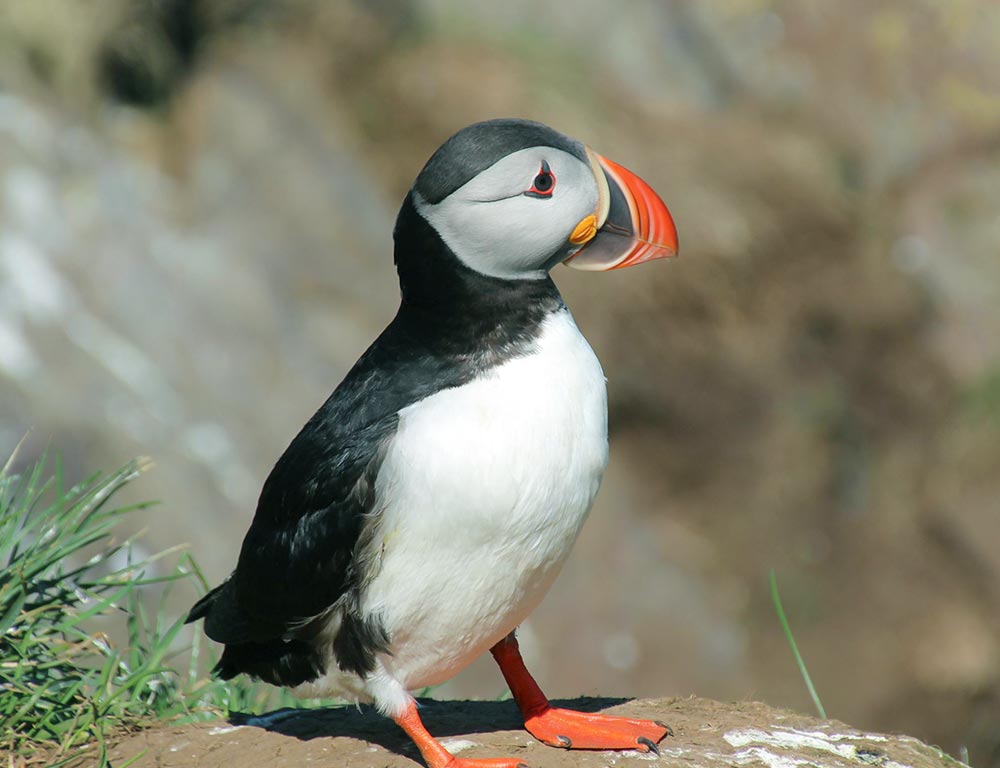
- Scientific name: Fratercula arctica
- Size: 10 to 13 inches
- Weight: 1.2 pounds
- Population: Vulnerable
- Life span: 20 years (maximum)
- Wingspan: 20 to 24 inches
- Status: Vulnerable (IUCN)
The Atlantic Puffin exhibits an iconic orange bill with bright markings. These seabirds breed on coastal cliffs and islands in the North Atlantic.
Puffins are adept flyers and swimmers, utilizing their wings to “fly” underwater.
Their diet primarily consists of fish, and they are known for their distinctive method of holding multiple fish in their bills. Unfortunately, their populations face threats, including overfishing and climate change.
6. Variable Oystercatcher
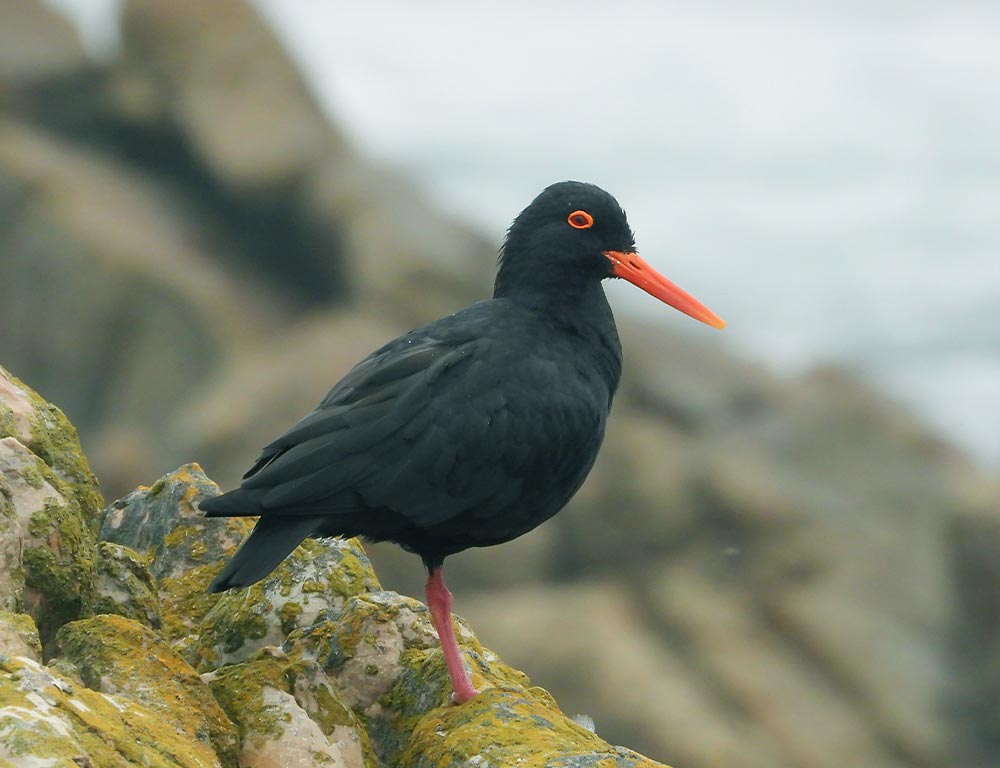
- Scientific name: Haematopus unicolor
- Size: 17 to 21 inches
- Weight: 1 to 2 pounds
- Population: Stable
- Life span: 15 to 25 years
- Wingspan: 30 to 35 inches
- Status: Least Concern (IUCN)
The Variable Oystercatcher features a long, vibrant orange-red bill. Native to New Zealand, they inhabit coastal areas, estuaries, and beaches.
Oystercatchers are known for their distinctive calls and feeding behavior.
They use their bills to pry open shellfish, their primary food source. Breeding in pairs, these birds are territorial during the nesting season.
7. Australian Zebra Finch
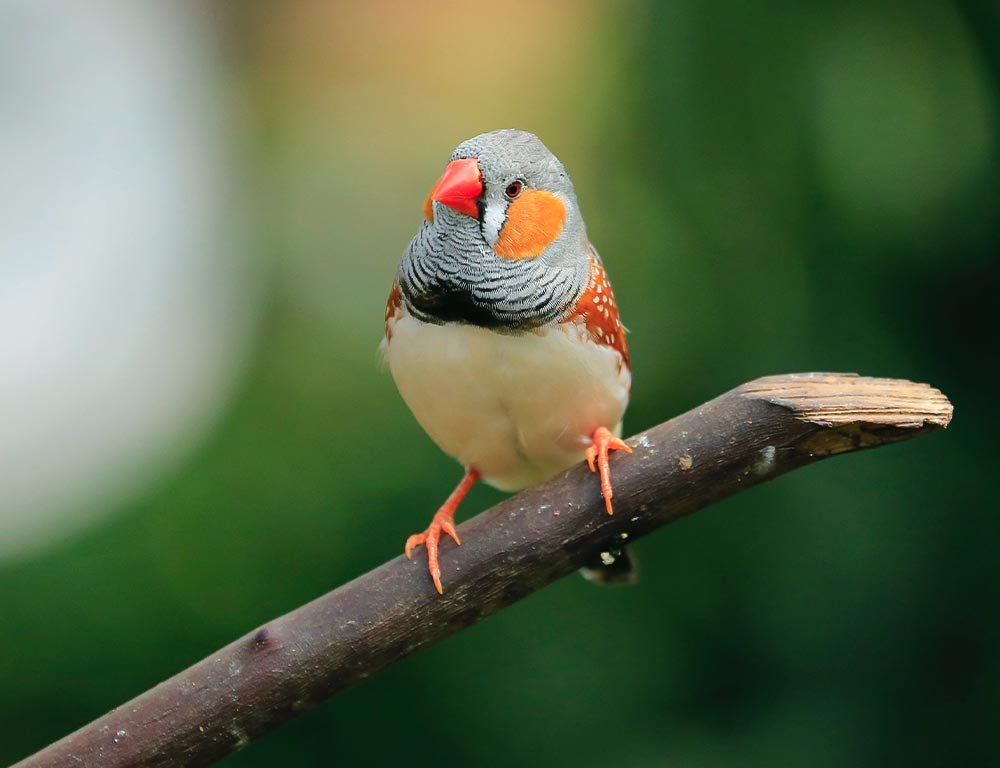
- Scientific name: Taeniopygia guttata
- Size: 3.5 to 4.3 inches
- Weight: 0.4 to 0.6 ounces
- Population: Abundant
- Life span: 2 to 5 years
- Wingspan: 5.1 to 6.3 inches
- Status: Least Concern (IUCN)
The Australian Zebra Finch has a small but distinctively orange beak. Found across Australia, they inhabit grasslands, savannas, and open woodlands.
Zebra Finches are highly social and often found in large flocks. Their diet consists of seeds, and they are known for their elaborate courtship displays.
As popular aviary birds, they are appreciated for their charming personalities and lively nature.
8. American Goldfinch

- Scientific name: Spinus tristis
- Size: 4.3 to 5.1 inches
- Weight: 0.4 to 0.7 ounces
- Population: Stable
- Life span: 6 to 7 years
- Wingspan: 7.5 to 8.7 inches
- Status: Least Concern (IUCN)
The American Goldfinch features a small, conical beak with a distinctive bright yellow color.
Native to North America, these birds are often seen in fields, meadows, and gardens. Goldfinches are seed eaters, favoring thistle and sunflower seeds.
Their plumage changes with the seasons, turning a vibrant yellow during the breeding season. They are social birds, often seen in flocks, and are known for their delightful, undulating flight.
9. American Robin
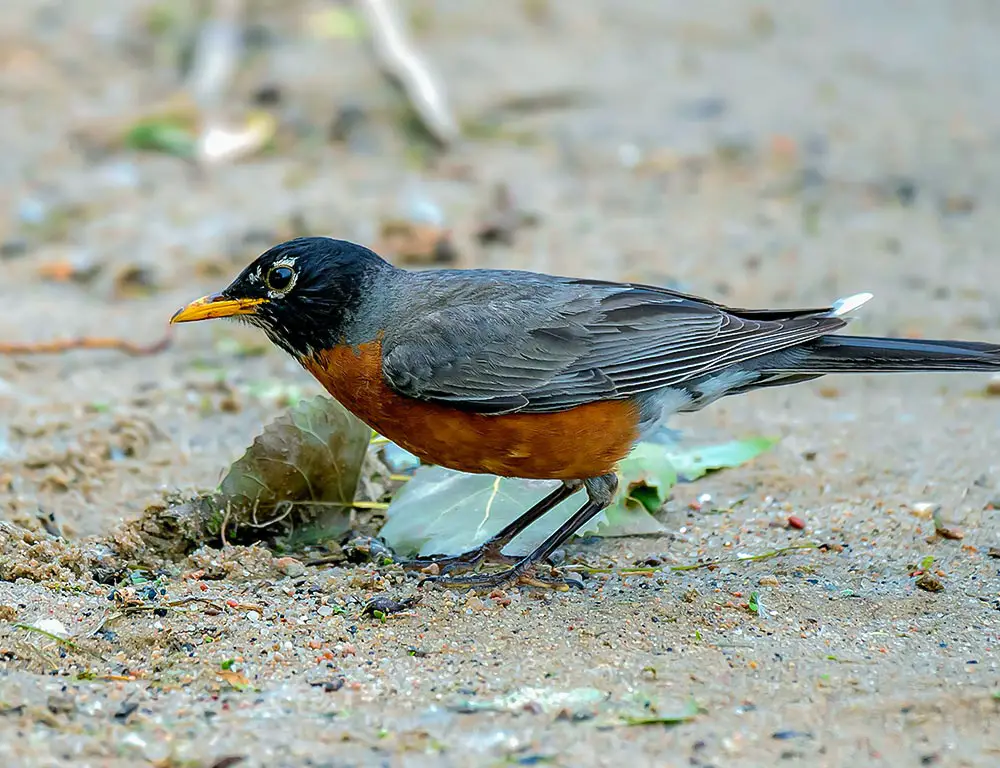
- Scientific name: Turdus migratorius
- Size: 9 to 11 inches
- Weight: 2.7 to 3 ounces
- Population: Abundant
- Life span: 2 years (average)
- Wingspan: 12 to 16 inches
- Status: Least Concern (IUCN)
The American Robin boasts an orange-yellow bill and a red-orange breast, contrasting with its grayish-brown back.
Common across North America, these birds thrive in various habitats, including gardens, parks, and forests.
Robins are omnivores, feeding on insects, fruits, and berries. They are known for their cheerful songs, often considered a harbinger of spring.
10. Anhinga
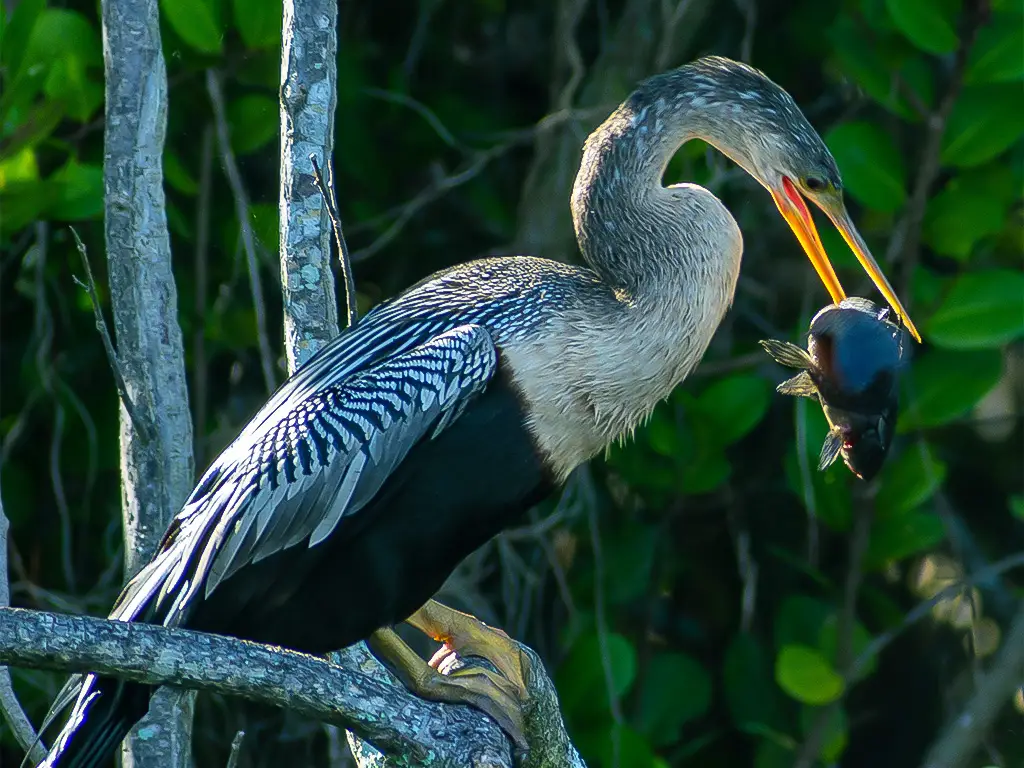
- Scientific name: Anhinga anhinga
- Size: 35 to 37 inches
- Weight: 2.2 to 5.5 pounds
- Population: Stable
- Life span: Up to 10 years
- Wingspan: 43 to 47 inches
- Status: Least Concern (IUCN)
The Anhinga, also known as the “snakebird,” features a sharp, pointed orange bill.
Found in freshwater habitats across the Americas, they are skilled swimmers and divers. Anhingas primarily feed on fish and other aquatic prey.
Their plumage is dark, and they have a long neck and a pointed bill, well adapted for spearfishing. They are often seen perched with their wings spread open, drying them in the sun.
11. Crested Caracara
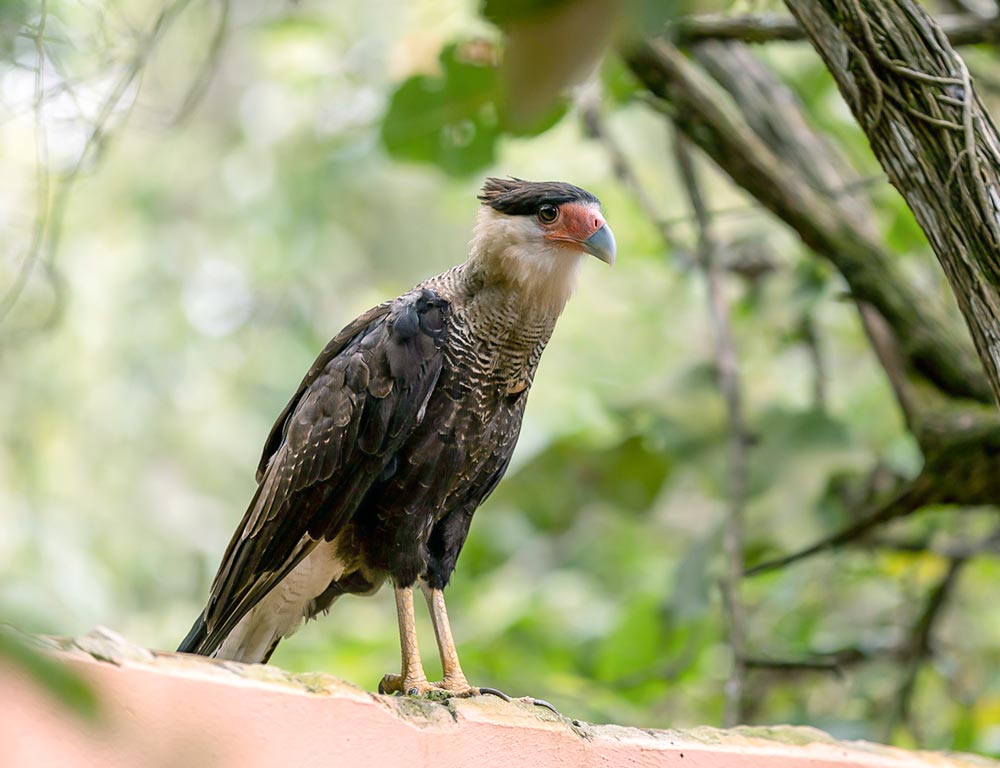
- Scientific name: Caracara cheriway
- Size: 19 to 23 inches
- Weight: 2.6 to 4.4 pounds
- Population: Stable
- Life span: 10 to 15 years
- Wingspan: 4.5 to 4.9 feet
- Status: Least Concern (IUCN)
The Crested Caracara exhibits a robust, hooked orange bill. Native to the Americas, these birds are often found in open country, including grasslands and savannas.
Caracaras are opportunistic predators, feeding on small mammals, birds, and carrion.
They are known for their distinctive appearance, with a crest on their head, and are often observed scavenging for food in pairs or small groups.
12. Greylag Goose
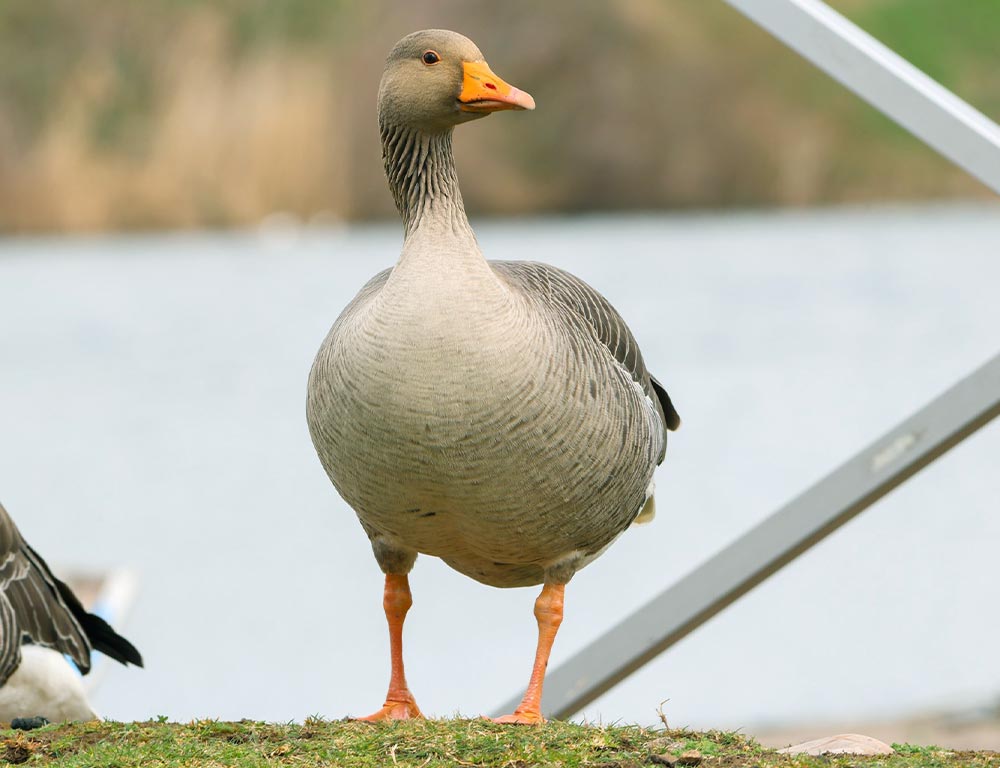
- Scientific name: Anser anser
- Size: 30 to 37 inches
- Weight: 4.4 to 8.8 pounds
- Population: Stable
- Life span: 10 to 15 years
- Wingspan: 55 to 66 inches
- Status: Least Concern (IUCN)
The Greylag Goose has an orange bill and is the ancestor of the domesticated goose. Widely distributed in Europe and Asia, these geese inhabit various wetland habitats.
Greylag Geese are herbivores, grazing on grasses and aquatic plants. They are known for their distinctive honking calls and V-shaped flight formations during migration.
13. Mallard Duck
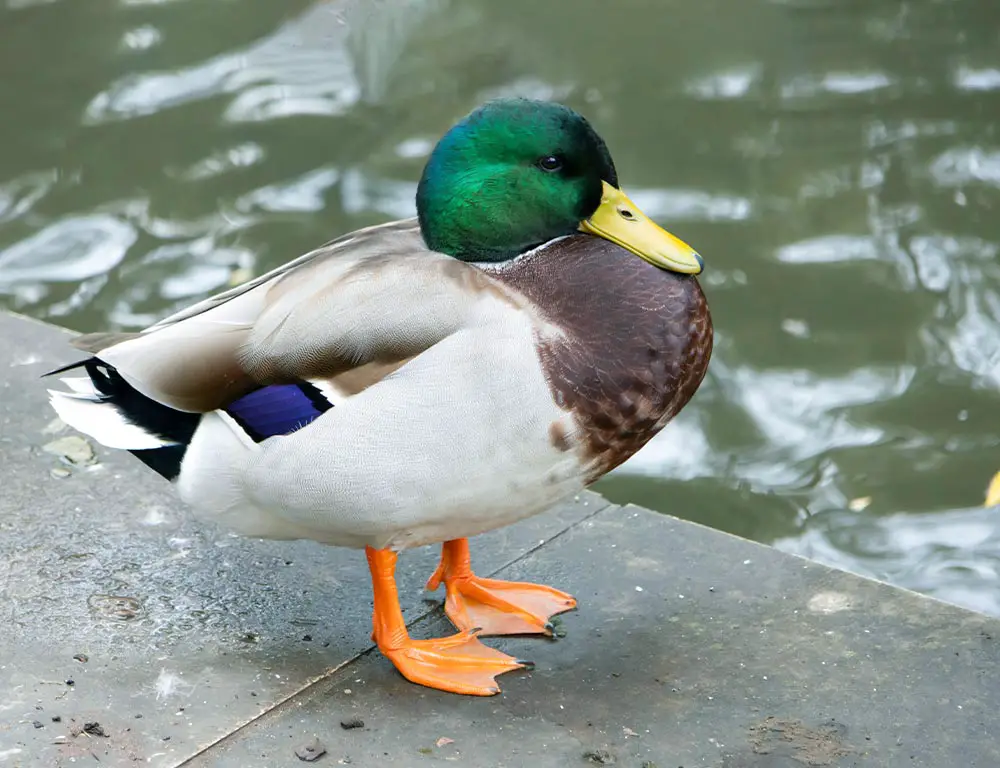
- Scientific name: Anas platyrhynchos
- Size: 20 to 26 inches
- Weight: 2 to 3 pounds
- Population: Abundant
- Life span: 5 to 10 years
- Wingspan: 32 to 39 inches
- Status: Least Concern (IUCN)
The Mallard Duck features a distinctive orange bill with a black “lip.” Found globally, they inhabit a wide range of wetland environments.
Mallards are omnivores, feeding on aquatic plants, insects, and small fish.
Their adaptability to urban environments has made them one of the most recognizable and widespread duck species.
14. Mute Swan
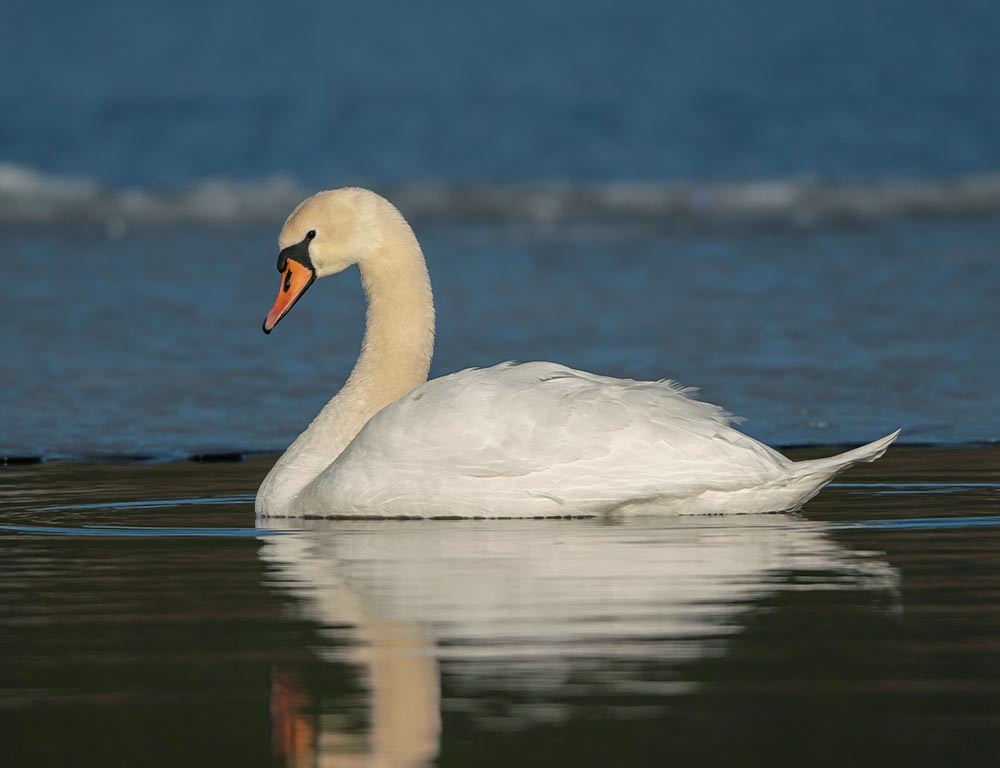
- Scientific name: Cygnus olor
- Size: 55 to 63 inches
- Weight: 17 to 30 pounds
- Population: Increasing
- Life span: 10 to 20 years
- Wingspan: 7.5 to 9.8 feet
- Status: Least Concern (IUCN)
The Mute Swan is known for its elegant appearance and orange bill. Native to Europe and Asia, they have been introduced to other parts of the world.
Mute Swans are herbivores, feeding on aquatic plants. They are recognized for their long necks, graceful swimming, and territorial behavior during breeding.
15. Orange-billed Sparrow
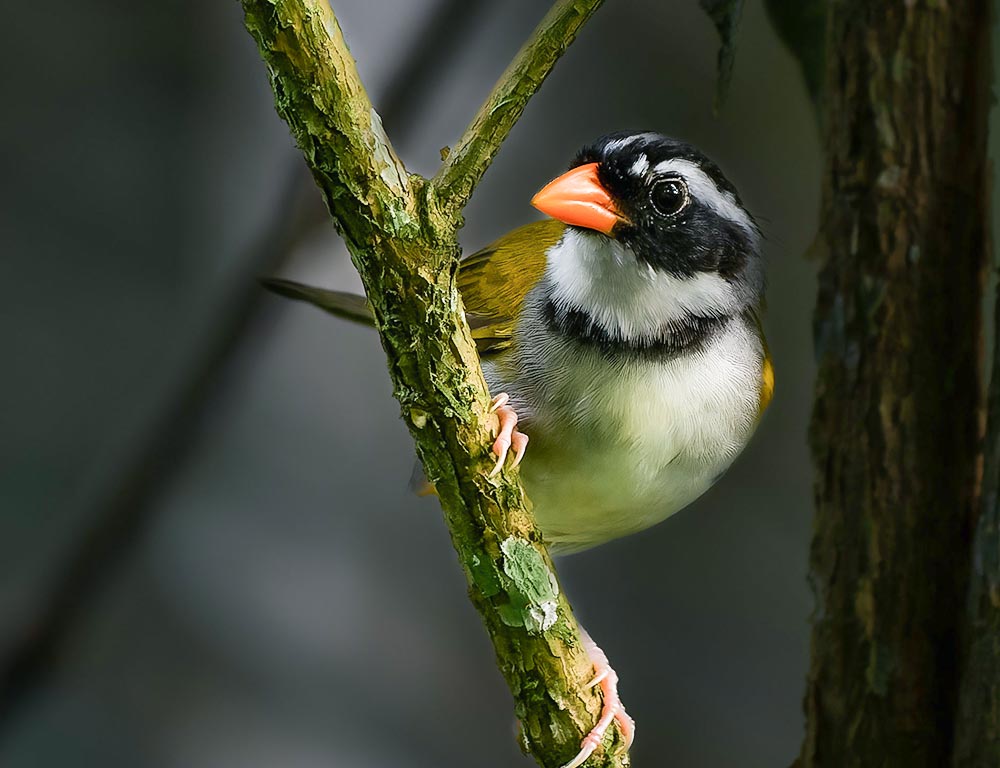
- Scientific name: Arremon aurantiirostris
- Size: 5.5 to 6.7 inches
- Weight: Approximately 1 ounce
- Population: Stable
- Life span: 2 to 5 years
- Wingspan: 7.9 to 9.1 inches
- Status: Least Concern (IUCN)
The Orange-billed Sparrow is a small passerine bird with a distinctive orange bill. Found in Central America, from Belize to Panama, this sparrow inhabits various habitats, including forests, shrublands, and gardens.
They primarily feed on seeds, fruits, and insects. These social birds are often seen in small flocks and communicate through various melodious calls.
Nesting in shrubs and trees, these birds exhibit strong territoriality during breeding. Their melodious calls contribute to the vibrant soundscape of Central American landscapes.
16. Toco Toucan
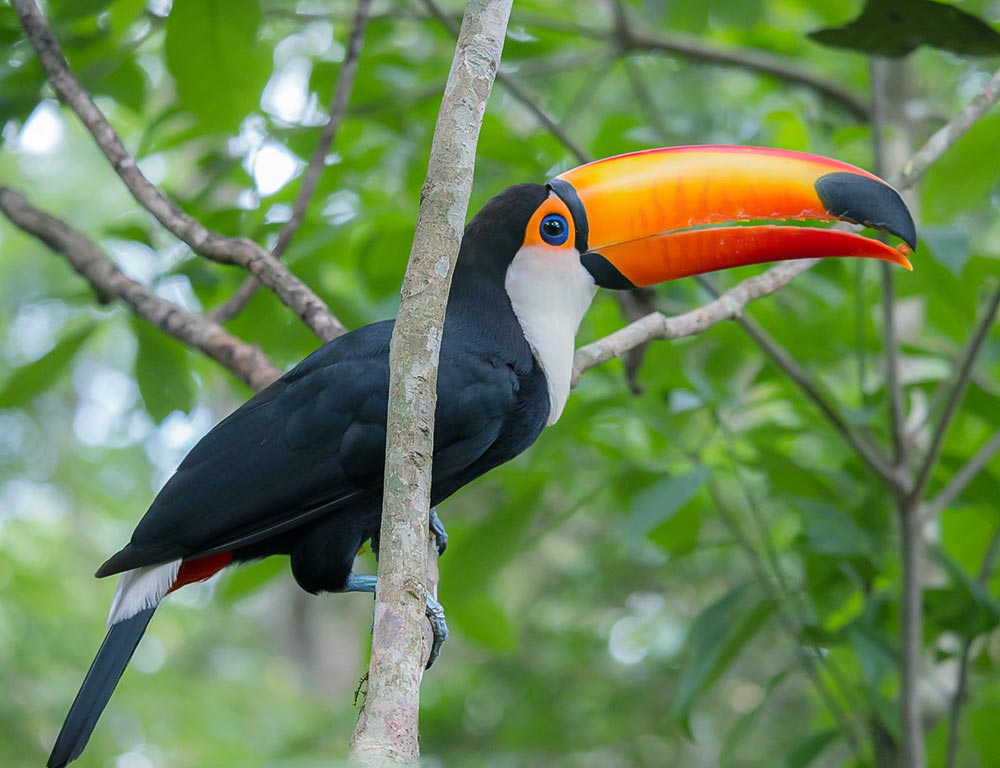
- Scientific name: Ramphastos toco
- Size: 20 to 25 inches
- Weight: 1.5 to 1.7 pounds
- Population: Stable
- Life span: Up to 20 years
- Wingspan: 1.9 to 2.3 feet
- Status: Least Concern (IUCN)
The Toco Toucan, with its large, vibrant orange bill and striking markings, is one of the most recognizable birds in the South American rainforest.
Found in parts of Brazil, Paraguay, Argentina, and Bolivia, these toucans inhabit both tropical and subtropical forests.
Their bill is colorful and has a serrated edge, aiding in grasping and manipulating food. Toco Toucans are primarily frugivores, feeding on various fruits, but they may also consume insects and small vertebrates.
These birds are cavity nesters, using tree hollows to raise their young. Their presence adds a vibrant and charismatic element to the biodiversity of the rainforest.
Wrapping Up
In the realm of avian diversity, the birds with orange beaks showcase a spectrum of colors and lifestyles.
From the vibrant Toco Toucan to the adaptable Common Blackbird, these winged wonders add a splash of color to their ecosystems.
Their distinctive beaks, ranging from brilliant orange to subtle hues, play pivotal roles in their survival, whether for feeding, communication, or mate attraction.
As we marvel at their unique features, it underscores the importance of preserving diverse habitats for these captivating birds, ensuring they enchant us with their beauty and ecological contributions. Thank you so much.